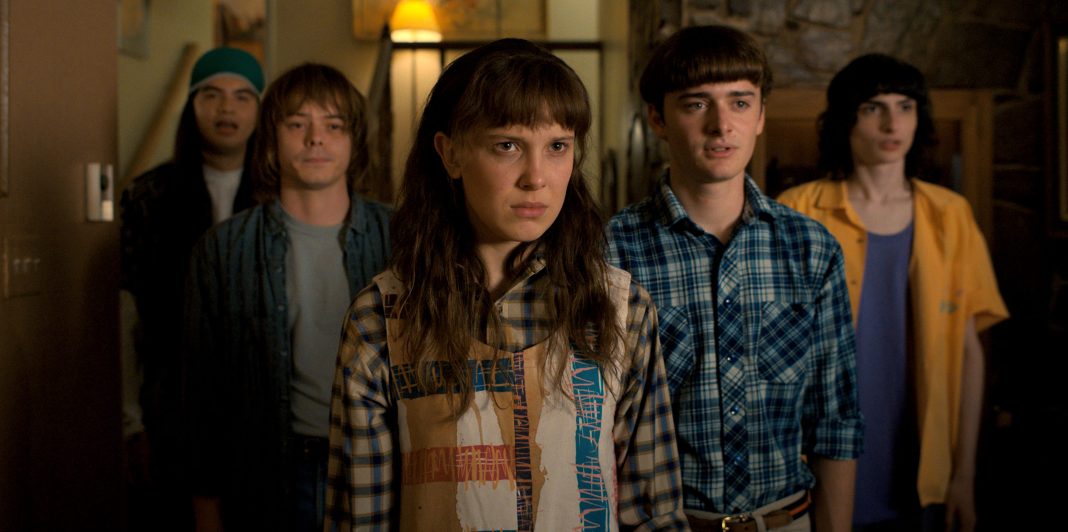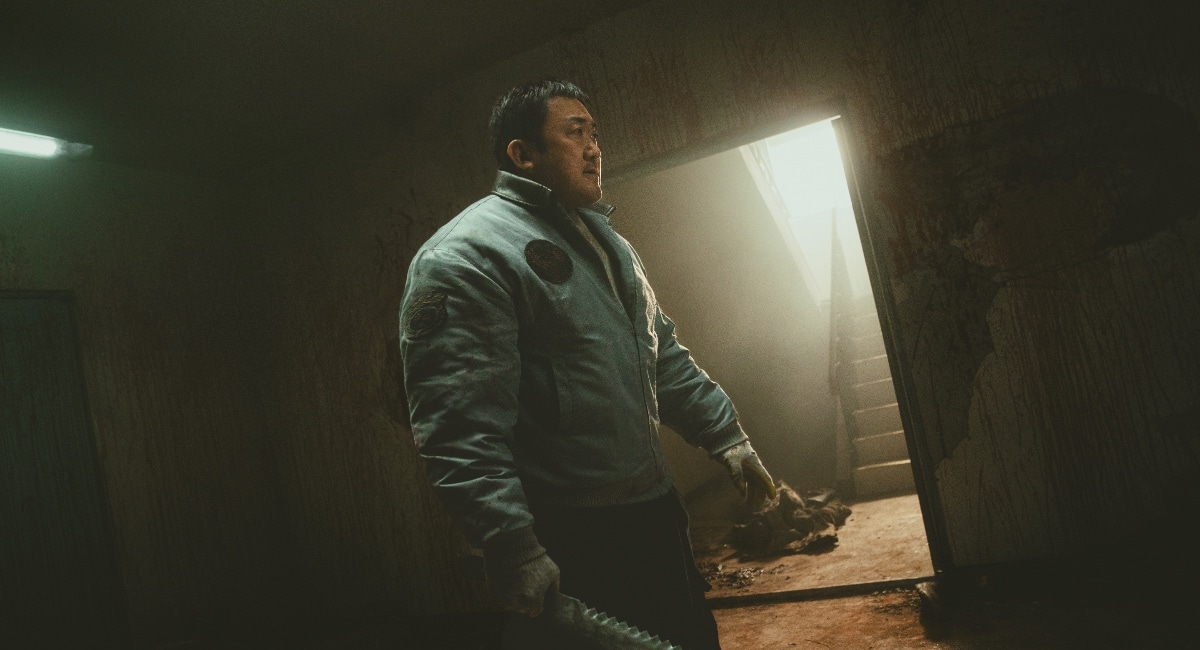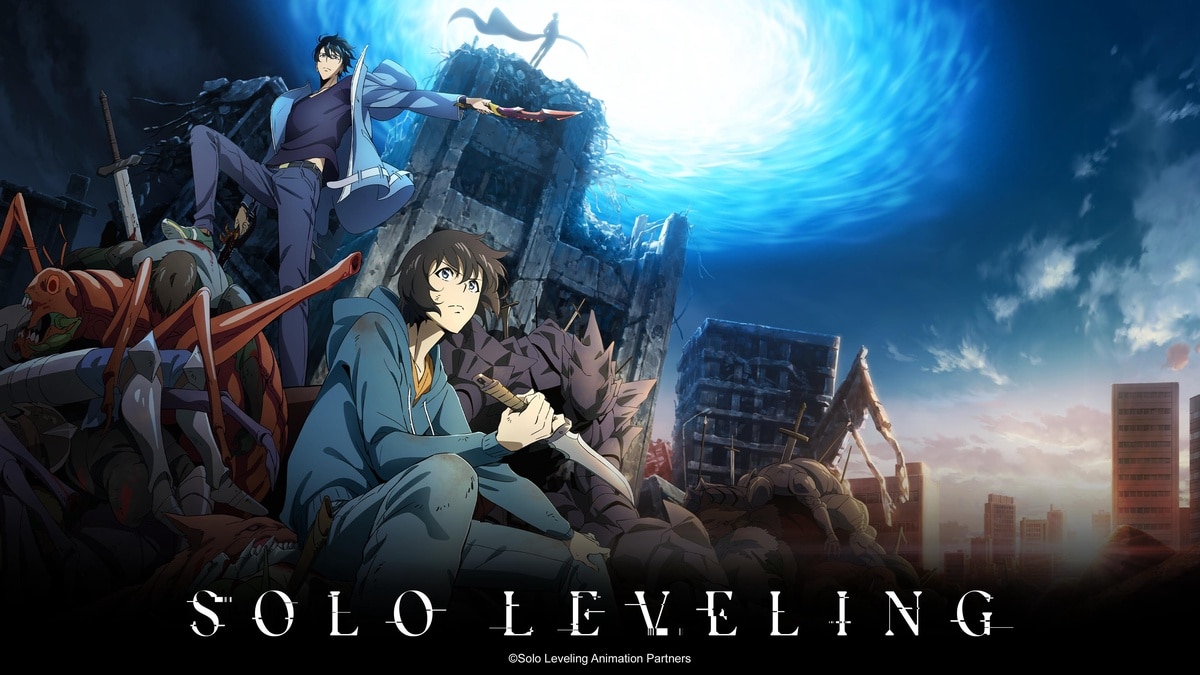The following spoiler-free review is based on all seven episodes of Volume 1 of Stranger Things Season 4.
There’s a saying that every dungeon master and seasoned Dungeons & Dragons player is familiar with: Never split the party. Whether you’re being pulled in two different ways by the main quest and an intriguing side quest, or you’ve got a not-so-lovable rogue who is more intent on robbing someone than saving a village, it’s not a good idea to split the party. After three years away from our tv screens, Stranger Things returns this week, but is the Netflix giant able to get away with splitting its party up?
Season 3 of Stranger Things ended dramatically, with the Byers and a powerless El (Millie Bobby Brown) headed to California, the rest of the gang staying in Hawkins, and Hopper (David Harbour) – believed to be dead by our gang – alive and somehow imprisoned by Russians. When The Duffer Brothers finally announced when we would be finding out Hopper’s fate, they revealed that the much anticipated Season 4 would be split into two volumes. Seven episodes dropping on May 27, 2022, and then the final two episodes (each feature movie length) would drop five weeks later on July 1, 2022.
First, let’s get the obvious out of the way, Stranger Things is still good. While it might have lost some of its initial shine, the performances, the chemistry, the story, it’s all still there. But the problem is, since July 4, 2019, the industry has changed a lot. Although Netflix seems to be clinging to the binge-drop method, its competitors are sticking with a hybrid or weekly release. Volume 1 of Season 4 is a behemoth. It weighs in at 539 minutes, almost nine hours of television. Each episode runs healthily over an hour, and they are PACKED episodes. It baffles, then, why Netflix would choose to drop a show that they have reportedly spent $30 million per episode on all at once, especially on a weekend where it must compete with the Disney+ giant’s nostalgia hit Obi-Wan Kenobi.
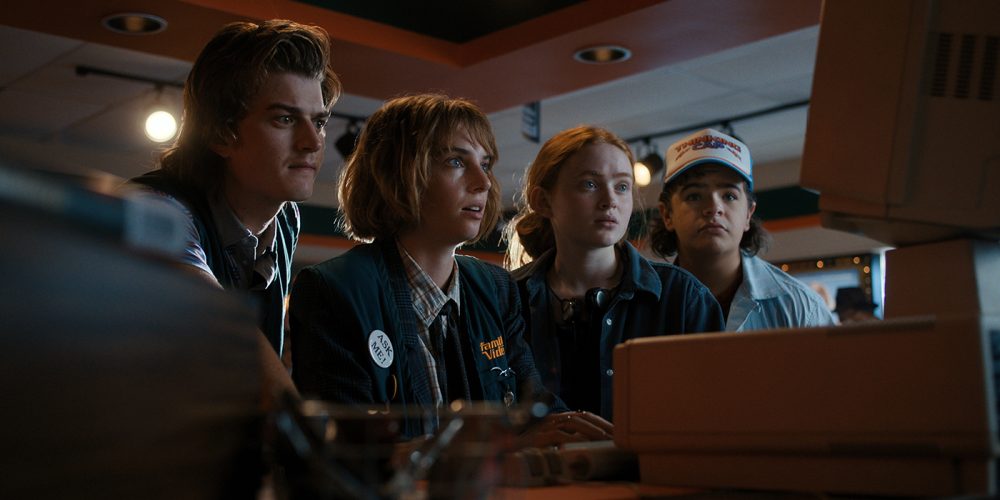
But what does this have to do with the quality of Season 4, you might ask? This show is simply not meant to be binged all in one sitting anymore, and it’s hard to imagine a show better fit for the weekly drop schedule than this one. Stranger Things is one of Netflix’s pillars, in a sea of increasingly forgettable content, Stranger Things stands as a bastion of Netflix’s first wave of entertainment. With its dynamic cast and its swinging-for-the-fence concept, it is synonymous with the streamer. It is also the type of show that would guarantee (digital) water cooler chatter the morning after it airs.
Instead, dropping it on a weekend in a digital climate where viewers will likely be splitting their time between shows they already watch, and Kenobi, will have the show trending for a weekend, maybe two, before interest plummets in the zeitgeist. And that sucks because this is the season that everyone should be talking about. The kids, split up, must learn not only to mature and fend for themselves, but they are up against increasingly insurmountable odds. From Satanic panic to bullying to trauma and grief, the kiddos are growing up and it’s in a hostile environment.
Because the story is essentially splintered – and further splinters as the story progresses – viewers must jump around from location to location, meeting new faces while trying to keep up with what they already know about show lore. As always, the location and production design is perfect. The Byers’ new home in sunny California is everything you imagine California to be in the 80s. The mysterious Russian prison where we see Hopper is full of nefarious figures and conspiracy, plus a healthy dose of freezing tundra. And Hawkins is as spooky as ever, with the addition of a (never mentioned?) haunted house that plays a pretty big part in the story.
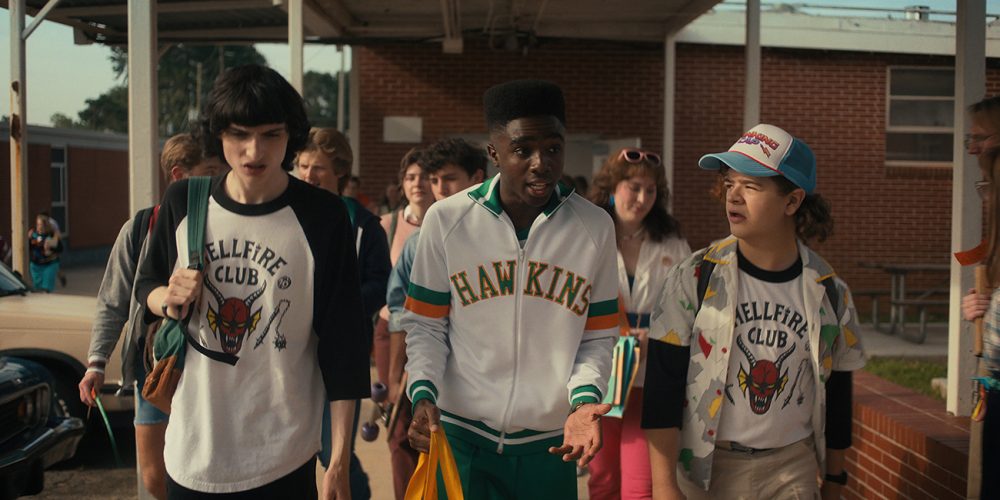
Plot-wise, the story feels like it is grasping a bit. After the conclusion of Season 3, which felt like such a bookend, it’s hard to imagine where the story goes next. And for much of the season, it’s more about trying to figure out how everything connects rather than anything else. Surprisingly, the mystery is rather a satisfying one to solve. Of course, out of all the stories, the plot back in Hawkins remains the most entertaining. While El’s journey is certainly compelling, it is also immensely angsty. She’s forgiven because she is a teenager who is not only a recovering superhero but also the new kid in town with raging hormones and still grieving the loss of her dad.
In Hawkins, we have Dustin (Gaten Matarazzo), Lucas (Caleb McLaughlin), Max (Sadie Sink), Nancy (Natalia Dyer), Steve (Joe Keery), and Robin (Maya Hawke). The kids are in high school with the teens now and with that comes its own issues. The boys are part of the Hellfire Club, a D&D club, run by the school burnout Eddie Munson (Joseph Quinn). Steve and Robin are both trying to get into relationships. Nancy is struggling with long-distance. And Max is still struggling with the loss of Billy (Dacre Montgomery).
Of Volume 1, the best episode by far centers around Max, titled “Dear Billy.” Here is where the show shines, perfectly blending the supernatural and horror aspects of the show with the chemistry and talent of the young cast. Although other episodes have bigger plot twists and surprises, this one is the emotional epicenter of the season.
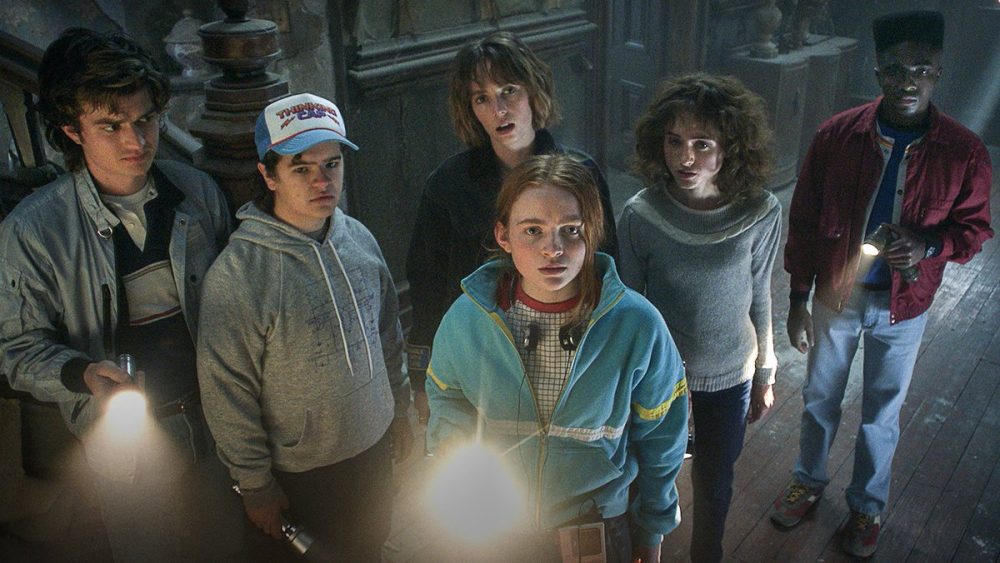
So, is it okay to split the party? The other storylines outside of Hawkins don’t have quite as much propelling them. The Russia and California stories are interesting and they have their purpose, but there’s a reason why the other seasons worked so well. The party is best when it’s functioning together as one beast. The split narratives allow for the introduction of new characters, which is both a good and bad thing. The characters themselves are fantastic, with highlights being Eddie, Argyle (Eduardo Franco), Jonathan’s (Charlie Heaton) new stoner best friend, and Dimitri (Tom Wlaschiha), a prison guard in Russia. But, of course, that means that more people are being added to the already bloated cast. Everyone is great, but that means it’s an inadvertent fight between characters to who gets the most screen time.
At the end of the day, Stranger Things is still good. I found myself eager to speak with colleagues, who also received screeners, about my theories and my thoughts at the end of the season. But the show has always been good, we knew that. Stranger Things did not need to prove itself to me. But as someone who did not get all episodes at once – I received four and then two and then the seventh episode – Netflix proved that its binge format is dead. After an abysmal quarter, maybe Netflix will turn things around by the final season of the series. Getting to sit and contemplate what happened without the chance to jump to the next episode immediately, the delayed gratification, was exactly what I needed. It’s just a shame that that’s not the experience everyone else will have.
Grade: B


